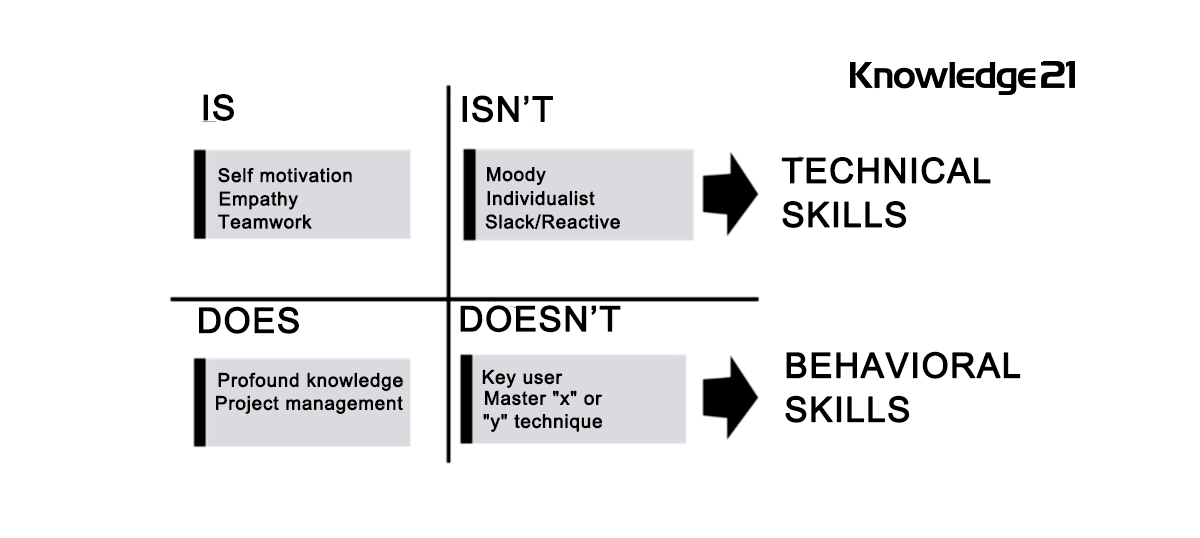For years I was a Head Hunter. And although I no longer fulfill this role formally, I can’t “uninstall” this component from my mental HD.
Let’s talk a little about what the process, or hiring conveyor belt, was like at the companies. It worked more or less like this: after a certain department formally announced a vacant position, HR would sit down with the manager to draw up a Job Description, or validate one already in existence. From this moment on, the clock is running desperately to meet the target (to date one of the few which usually existed) which we know as SLA (Service Level Agreement), in other words, the number of days to fill the vacancy.
Then HR starts to formally work on that vacancy. It’ll decide whether to try to fill the job internally or hire external consultants, hunting CV databases, researching LinkedIn, asking for recommendations, contacting endless candidates, interviewing about ten to find that all too rare of species. In other words, the manager’s dream candidate.
After a few more stages, which I’ve omitted to be a little more succinct, we get to the interviews with the three final candidates. And there are often as many as 5, 6… candidates, because the management liked the energy or the way they dressed, or in defining the infamous Job they forgot a fundamental skill and only remembered it on interview day.
So we have to have a meeting to try and establish flexibility regarding some technical skill because some of the superpowers required by the management cost a lot in the market and won’t be covered by the salary level the company wants to pay. Rework it correctly!
Right, finally the candidate is chosen and undergoes an entire admissions process, and they’ve hardly begun their first week at work when we find out that the indispensable technical skill that management insisted upon, will in fact never be used in the employee’s routine work.
Normally managers are so distant from the day-to-day activities that they don’t know exactly what the necessary skills are for that position. What usually happens is that they request or expect the “mini-me” candidate, in other words, themselves X years ago. How can we work with recruitment in an Agile way, to help us in such moments, which – amazingly – are more common than we think?
Let’s address two distinct points of R&S (Recruitment & Selection): team and prioritization.
The manifesto of agility says that individuals and interactions are worth more than processes and tools; so it’s the team which hires and fires.
In addition to this, we should ask the team what are the desired skills of this professional (it’s worth recalling that nowadays we spend more time at the company than with family and friends), as well as discussing the technical skills with the team. Just the act of asking the team and not management already means sharing responsibility for the hiring with the team, thus using collective intelligence. Consequently, the team will be corresponsable for this hiring, which in itself will determine a more gentle onboarding process for the new collaborator. Now imagine if the team were to take part in the final interviews. The hiring would be more assertive, with greater adherence to the team’s and the company’s culture, which would possibly result in a reduction in turnover.
We have a really cool tool to help the RH at this time. We call it the “IS, ISN’T – DOES, DOESN’T” matrix.
With this, we cover the behavioral (IS, ISN’T) and technical (DOES, DOESN’T) skills.

The World Economic Forum, in July 2018, listed the ten skills which a professional will need in order to survive the growing automatization.
And to the surprise of many, of these ten skills, all are behavioral skills and none technical. So this is one more reason why we should involve the teams.
Now let’s turn to the tripod of the Agile Mindset. Focus on business value, working in short cycles and seeking continuous improvement (See more in the text: Can the HR be Agile? No, they must be!). What can we do to prioritize a list (backlog) of available jobs to be filled in “x” days? After all, I have a target to fill these positions (SLA) putting pressure on the process and from time to time a more critical manager shouts louder and thereby succeeds in changing the order of this list. See whether these aren’t metrics shaping behavior …
If “x” days is the metric, how can I prioritize in a different way? We have to understand what represents business value for the company. If in my backlog I have a Senior Marketing Analyst (a vacancy open for 20 days) and a Bank Relationship Manager (vacancy open for two days), whose salaries are the same, normally we try to fill the vacancy which has been open the longest, right? But if I told you the Senior Analyst is going to work with ten analysts with similar functions, and that they’ll be able to cover the absence of this professional in the meantime, and that the Bank Relationship Manager alone generates R$400,00 profit a year? We’d have another vision based on metrics and information and focus on prioritizing that which will bring the organization the greater return.
That is why it is fundamental that the HR is able to prioritize his backlog in accordance with the ROI of each position, and can, therefore, decide which position the HR will deliver tomorrow! It is for these reasons that I say here that the RH must stop hiding behind norms and policies and start working in a more consultative way, measuring and using metrics in his everyday work, acting in close proximity to the business and clients, thereby working together with and not for the end client.
So what are you waiting for to involve the teams and prioritize your backlog of vacancies?
